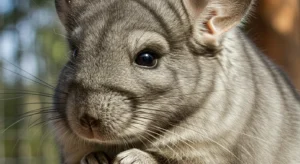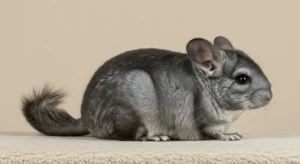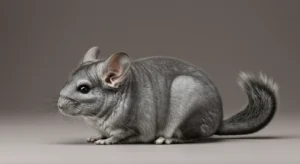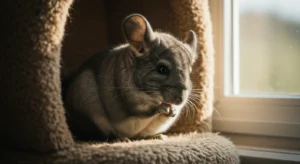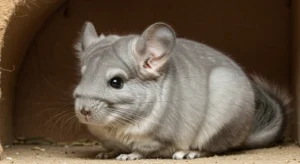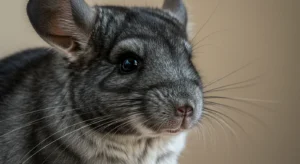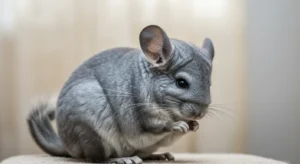Creating the Perfect Dust Bath for Your Chinchilla
A dust bath is not a luxury for a chinchilla; it’s a fundamental necessity for their health and well-being. Unlike animals that bathe in water, chinchillas use fine volcanic dust to remove excess oils, moisture, and dirt from their incredibly dense fur. Providing a proper dust bath is crucial for maintaining their coat’s condition and preventing skin issues.
Why Dust Baths are Essential
Chinchillas possess some of the densest fur in the animal kingdom, with upwards of 50-70 hairs per follicle (compared to humans’ one hair per follicle). This density makes them highly susceptible to moisture retention, which can lead to fungal infections and other skin problems. A dust bath works by absorbing oils and moisture, effectively cleaning the fur down to the skin.
- Keeps fur clean and free of excess oils.
- Prevents matting and keeps the coat fluffy.
- Helps prevent fungal and bacterial skin infections.
- Provides natural enrichment and promotes happy behavior.
Choosing the Right Dust
Not just any dust will do. It’s vital to use commercially available chinchilla dust, which is typically made from finely ground volcanic ash (like Blue Cloud or Blue Sparkle dust). Avoid using sand, cornstarch, baby powder, or dust intended for other animals like birds or hamsters.
Using the wrong type can be ineffective at best and harmful at worst, potentially causing respiratory issues or damaging their fur. Always select a dust specifically formulated for chinchillas. Look for products labeled as 100% natural volcanic ash or pumice.

Selecting a Bath House
A dedicated bath house contains the dust, reduces mess, and provides a secure place for your chinchilla to bathe. Choose a container that is:
- Spacious: Large enough for your chinchilla to roll around comfortably without feeling cramped. Dimensions around 10″L x 8″W x 8″H are usually suitable.
- Heavy or Securable: Chinchillas can be vigorous bathers! A heavy ceramic or metal container, or one that clips to the cage, will prevent tipping.
- Enclosed (Partially): An enclosed design (like a plastic house or a large, heavy bowl within a larger container) helps keep the dust contained.
- Easy to Clean: Choose a material that can be easily wiped down or washed.
Avoid materials like chewable plastic if your chinchilla is a persistent chewer, opting for ceramic, metal, or thick, durable plastic instead.
The Bathing Process
Setting up the bath is simple:
- Pour about 1-2 inches (2.5-5 cm) of chinchilla dust into the bath house.
- Place the bath house inside the chinchilla’s cage or playpen.
- Allow your chinchilla access to the bath. They will typically jump in and start rolling instinctively.
- Observe them enjoying their bath!
It’s fascinating to watch their natural instincts take over as they flip and roll to coat their fur.

Frequency and Duration
Offer the dust bath 2-4 times per week. Avoid leaving the bath in the cage permanently, as overuse can dry out their skin, and the dust can become soiled with urine or feces. Each bathing session should last about 10-15 minutes. After the time is up, remove the bath house.
One crucial aspect of maintaining chinchilla coat health is adhering to a consistent dust bath schedule. Adjust frequency based on humidity levels – more humid environments might require slightly more frequent baths.
Sift the dust after each use to remove any droppings, and replace the dust entirely at least once a week, or sooner if it becomes damp or heavily soiled.
Common Mistakes to Avoid
- Using Incorrect Dust/Sand: Can cause respiratory problems or eye irritation. Always use chinchilla-specific dust.
- Leaving Bath in Cage 24/7: Leads to overuse (dry skin/eyes) and soiled dust.
- Infrequent Bathing: Results in oily, potentially matted fur and increases risk of skin issues.
- Too Little Dust: Chinchilla needs enough depth to roll effectively.
- Water Bathing: NEVER bathe a chinchilla in water unless directed by a vet for a specific medical reason. Their dense fur takes extremely long to dry and can lead to chill or fungal growth.
Understanding the essential chinchilla grooming requirements, especially concerning dust baths, is key to a happy and healthy pet.
By providing the correct dust, a suitable container, and adhering to a proper schedule, you ensure your chinchilla can perform this vital natural behavior, keeping their luxurious coat in pristine condition.
